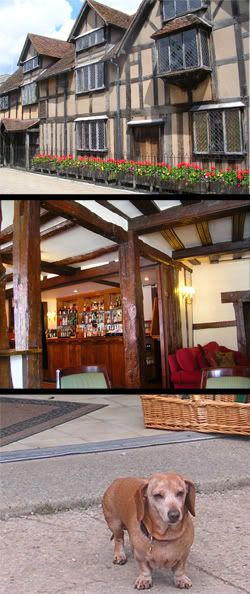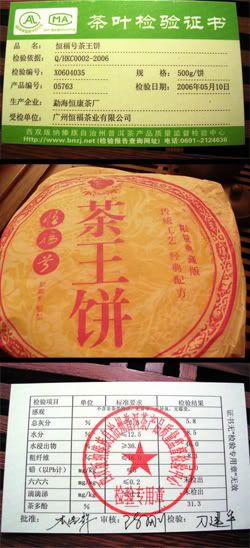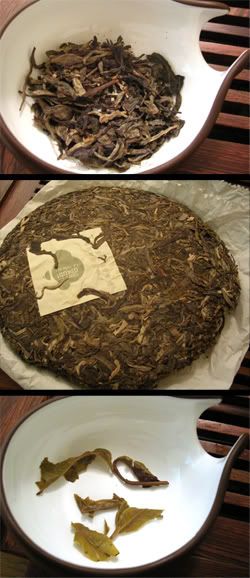
Life's but a walking shadow
A poor player
That struts and frets
His hour upon the stage
And then is heard no more.
Macbeth
Etched into Shakespeare's memorial in his home-town of Stratford-upon-Avon [pictured], the familiar words reminded me of a fine piece I'd recently read by Mike Shichangpu, on the subject of loss. As I looked up and down Stratford's old High Street, it seemed poignant that not even the Bard's ancient home-town could avoid its own special form of demise, and loss of its own.
My last visit to Stratford was over a decade ago, as a Fresher. Being an irresponsible eighteen-year-old, I had spent my entire second term's bursary on a birthday trip for my girlfriend of the time to a beautiful 15th century hotel. The town was small, gentle, and filled with old bookshops - time had passed slowly since Shakespeare's age.
The Stratford of my memory appears to be no more. Where once quiet lives were led in peaceful isolation from the rest of the world, now is covered in concrete pathways (to withstand mass tourism), counterfeit "olde shops", and outlets of multinational coffee-shop chains. 100% of the accents I heard in the streets were American, oddly enough. Stratford's hour upon the stage is definitely heard no more, and the words of Mike's article rang true. All that remains here is a theme park - it reminded me of the Forbidden City.
 However, every cloud has a silver lining. What the centuries could not do to Stratford, modern capitalism appears to have achieved in a decade - but one pleasing side-effect is that one in every three shops sells "Tea". Most of these are insulting to anyone with even a modicum of taste, but it is these that tend to do the best business with the visitors to the town. However, as is true of most things in life, the best tea shops do not shout about themselves, and merely exist in all their rustic finery, resting quietly in their own natures - ignored by the masses, patronised by the few.
However, every cloud has a silver lining. What the centuries could not do to Stratford, modern capitalism appears to have achieved in a decade - but one pleasing side-effect is that one in every three shops sells "Tea". Most of these are insulting to anyone with even a modicum of taste, but it is these that tend to do the best business with the visitors to the town. However, as is true of most things in life, the best tea shops do not shout about themselves, and merely exist in all their rustic finery, resting quietly in their own natures - ignored by the masses, patronised by the few.These silent beauties do not exhibit gaudy plaques advertising dubious claims to antique histories. They do not offer "real British teas" (we seldom use the term "British" for anything). They very definitely do not name items on their menu after Shakespeare ("The Shakespeare Club Sandwich"). Discreet service, hushed tones, and centuries-worn interiors instead await those willing to leave the crowds behind and venture inside.
You won't find 30s pu'er (unfortunately), and you won't find fresh Qingming greens, but you will find a comforting Afternoon Tea served with the usual complement of irregularly-shaped, still-warm scones and enough cholesterol-loaded cream to scare away those tiresome sorts for whom life is a health regime, not a pleasure. My thunderous brow and ringing ears gradually eased, in quiet conversation with my companions who looked similarly affronted by the modern Stratford. For all that I dislike tourists, the irony that I am one of them is not wasted on me.
As yet another coach-load of visitors arrived, I sat in a doorway with a little daschund [pictured]. He oozed quiet wisdom, regarding everything around him with the cool regard of a seasoned Zen master. I gave obeisance to his silent teachings by scratching his ears.
What manner of tea can make up for such woe?
 The Hengkang Factory "Chawang" [Tea King] is made for the large Hengfu Tea Company. Like most of their products (such as the Laohei), this one looks pretty, if nothing else. It comes with its own series of "passports": laminated cards giving pesticide and fertiliser levels in the tea, compared to Mainland-recommended limits. Indeed, these can be easily fabricated, and the actual numbers may mean little in themselves even if accurate, but they represent an acknowledgement that such matters are significant - which is surely a step in the right direction. We received this from the dealer that we visited in Chengdu.
The Hengkang Factory "Chawang" [Tea King] is made for the large Hengfu Tea Company. Like most of their products (such as the Laohei), this one looks pretty, if nothing else. It comes with its own series of "passports": laminated cards giving pesticide and fertiliser levels in the tea, compared to Mainland-recommended limits. Indeed, these can be easily fabricated, and the actual numbers may mean little in themselves even if accurate, but they represent an acknowledgement that such matters are significant - which is surely a step in the right direction. We received this from the dealer that we visited in Chengdu.~15cl Caledonian Springs @ 100C in 20cl shengpu pot; ~5g leaf; 1 rinse
Dry leaf:
Long, loose, luxuriant leaves [pictured]. Inner bing leaves are noticeably higher in compression, and perhaps smaller. The tips, however, are all in the outer shell. The reassuring aroma of wood-sap is about the leaves.
15s, 10s, 10s, 15s:
Orange soup, which seems bright. It is slightly opaque with tip-fur suspended in it. THe beidixiang is smokey, with plenty of young shengpu energy. This is a touch overbrewed, and needs shorter infusions to avoid the potency that this tea can happily deliver in excess.
Decreasing the strength removes the smokiness, with a long and sweet lengxiang that lasts for at least five deep breaths. The flavour is sharp and straight from the outset. The punch of the youth is coupled with a decent grain-like aftertaste that I find enjoyable.
 The body is full, and this bodes well for its future. Freshness and power are evident in abundance, and the huigan makes the mouth water.
The body is full, and this bodes well for its future. Freshness and power are evident in abundance, and the huigan makes the mouth water.Wet leaves:
Generally small and whole with good strength - they seem healthy. The solid colour is reassuring, given recent forays into red-oxidised pu'er.
Overall:
Not outstanding, but potent with some surrounding character that could indicate potential storage benefits. The huigan is sweet and pleasant, and I enjoyed the finish in the nose.
CB was kind enough to provide comments for this tea, noting a good coating in the mouth, but with the lingering bitterness that sits in the throat. She found the smokiness to be more obvious, and detected some jasmine-floral finishing touches that eluded me.
When I took these notes, I didn't comment on the chaqi, but CB notes it to be strong, if short-lived.
I admire the presentation and appearance of the cake; it's not one to enjoy now, so let's see how it changes over time. Hengfu products are definitely catering to the newer pu'er lovers in the world. If they can back up their chemical analysis of the organic nature of the tea processing with some sort of status guarantee, I would be more likely to give credence to the unusually high-quality "passport" documentation that was included with this cake. They look pleasant, but do they carry any real meaning?
Good night! Good night! Parting is such sweet sorrow...

7 comments:
Hi Hobbes,
Do you always prepare your puerhs with a temperature of 100C?
I usually use a water at 9OC for the young sheng puerhs since they are almost closer to green tea but I should try your method if you recommend it...
Thanks,
Sacha
I've tried two cakes by these people, not the Chawang though. There was one that I debated about getting, as it was a reasonable value tea at around $7 a piece. Never did though, because I decided I could do without it... and now I don't want to go back because the guy will remember me :)
Love this entry, Hobbes! For living in dreary Los Angeles, I have always been attracted by the charm of small European towns and villages. They symbolize all sorts of romantic-novella notions. Sadly, I can only be a bothersome tourist and a mere transient at those destinations.
Also, I have a secret love towards daschunds. One such loving, intelligent and elongated being was a childhood pet of mine.
On to the tea: what is your understanding of the term "chawang"? I haven't quite grasped what differentiates a "chawang" from the non-chawang, in technical and/or quality standards. I wonder if the designation is given more arbitrarily than it should be.
Sacha,
Like all things, it's personal preference, I think. I find that a 100C infusion can get the best out of a pu'er, but it can be less forgiving in terms of bitterness. Try them all and whichever works best for you is the correct answer. :)
LZ,
$7 sounds like a steal, if it was similar to the chawang. I dread to think how much I actually paid for this cake - we left the selection to someone else, for this and a few other bought about that time. Almost without doubt, we didn't get a good deal, but that was a decision we took in advance. ;)
Andrew,
It's an interesting situation. We're all in the same boat. I truly dislike tourism, and yet I'm a tourist wherever I go. My best effort to resolve this conflict is to try and be respectful to the place I'm visiting, avoid polluting it with my own opinions and culture, and generally try to "tread lightly" as best I can. It doesn't always work, but it's getting there.
For all we see of "chawang", I don't believe it has any connotation other than "Good Tea(tm)"; it's not like a gongbing, claiming to be tribute quality. My eyes tend to skate over that phrase without registering any special respect for it...
Toodlepip all,
Hobbes
Chawang is about as meaningful as me saying Phyll is the Dictator of Mars :).
I was going to say, I hope you didn't pay too much for this thing.
You know what I just noticed...
It's the 2006 Laohei that the guy wanted to sell me for $7. I didn't realized you've tried the 04 Laohei. I wonder how they compare.
So, Phyll, how is Mars these days?!
LZ,
The '04 Laohei is not a bad little cake. Maybe I can start a short list of half-interesting samples and send them your way when it reaches a decent number. It's above average, but perhaps not worth getting interested, especially.
VL found it to be below average, I seem to remember. Was that when brewed from the Glass Gaiwan of Doom, I wonder... :)
Toodlepip,
Hobbes
Post a Comment